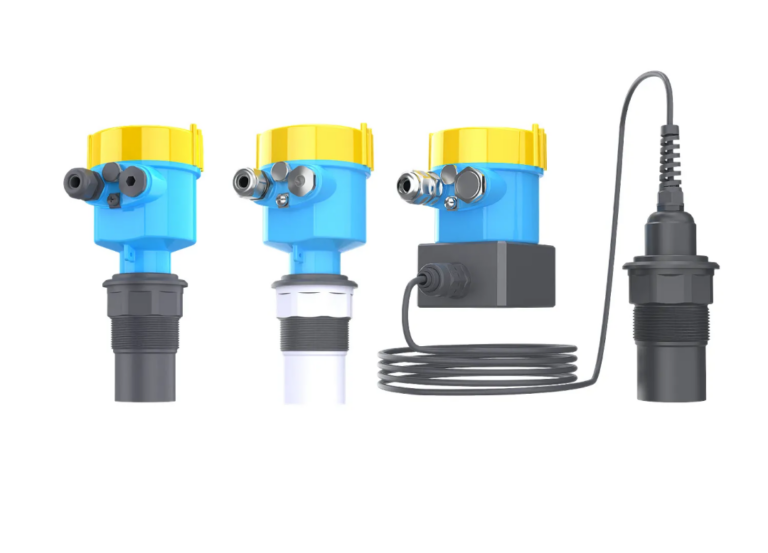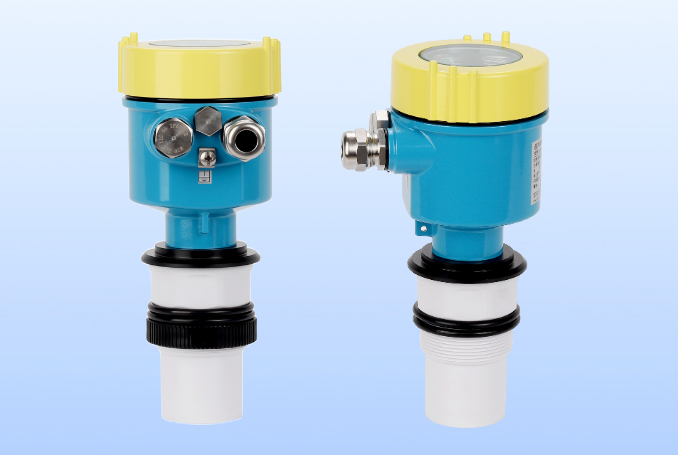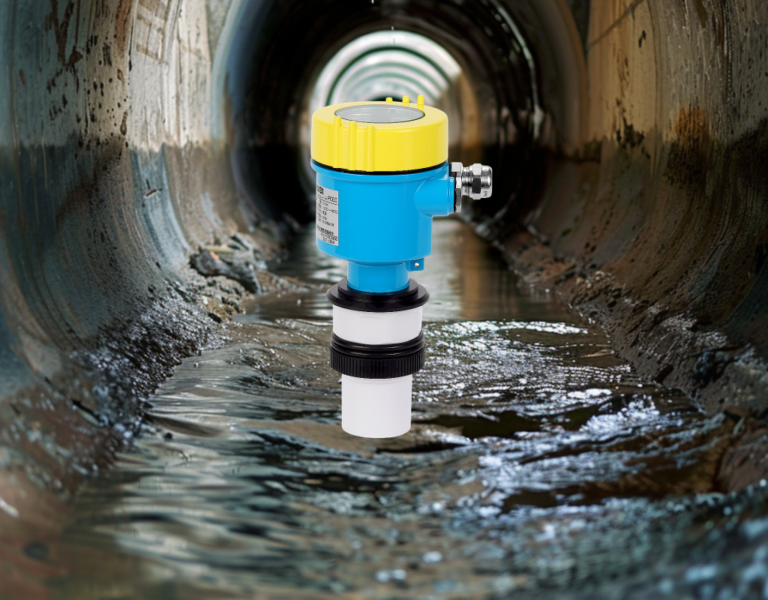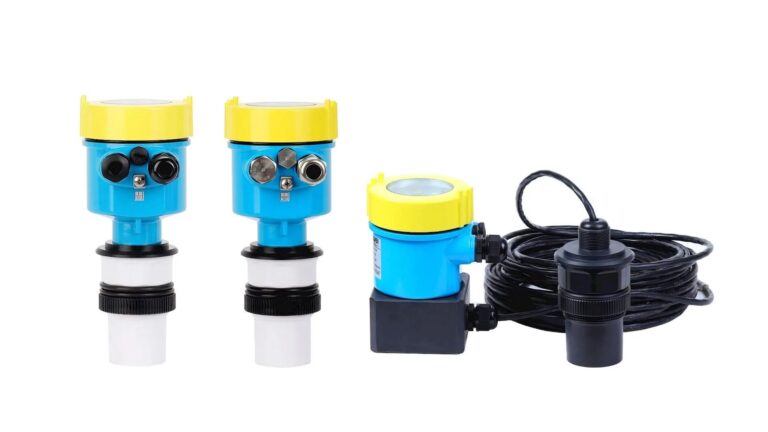1. Industry-Specific Requirements for Level Measurement in Food Production
In the food and beverage industry, level measurement solutions must meet strict hygiene standards, ensure high measurement accuracy, and facilitate easy maintenance. Ultrasonic level meters, as non-contact sensors, align well with the following critical demands:
Hygienic Compliance: The measurement system must avoid direct contact with the medium to eliminate contamination risk. Sensor materials must conform to food-grade standards, such as 316L stainless steel and PTFE probe heads.
Adaptability to Complex Media: The devices must handle viscous substances like sauces, suspensions containing pulp or fat particles (e.g., juices, dairy), and corrosive cleaning agents used in CIP (Clean-in-Place) systems.
Ease of Cleaning and Maintenance: The equipment must support quick disassembly, high-frequency cleaning cycles, and compatibility with steam sterilization.
Explosion-Proof and Leak-Tight Design: Applications involving alcohol storage or edible oil tanks require explosion-proof certification and leak-prevention features.
Typical Applications:
Raw Liquid Ingredient Storage: Level monitoring in milk, juice, or oil tanks to manage inventory and control filling processes.
Fermentation Tanks and Reactors: Continuous level control to ensure microbial viability and process consistency.
Cleaning Agent Tanks: Accurate acid/alkali level monitoring to prevent overuse and minimize equipment corrosion.
Filling Lines: Real-time level calibration during dynamic filling processes, ensuring packaging accuracy (tolerance ≤ ±1mm).

2. Technology Overview and Adaptability to Food Applications
Ultrasonic level meters operate by emitting high-frequency acoustic pulses (20kHz–1MHz) and measuring the time it takes for the echo to return after hitting the liquid surface. The level height is calculated using the equation:
L = E – (c × t / 2)
Where:
L: Liquid level
E: Tank height
c: Speed of sound
t: Echo round-trip time
Key Advantages for the Food Industry:
Non-Contact Operation: The sensor does not come into physical contact with the medium, minimizing contamination risks and complying with FDA and HACCP regulations.
Corrosion-Resistant Materials: PTFE or ceramic probe heads withstand aggressive media with pH ranging from 1 to 14.
High Precision and Fast Response: Accuracy up to ±2mm and response times under 0.5 seconds meet the needs of high-speed bottling lines.
Hygienic and Easy-to-Clean Design: Smooth, crevice-free sensor surfaces support cleaning with high-pressure water jets and steam sterilization.

3. Application Case Studies
🥛 Dairy Storage Tank Monitoring
A dairy company installed a split-type ultrasonic level meter at the top of a pasteurized milk tank. Real-time level data transmitted via a 4–20mA signal is used to control the filling line. Results:
Inventory turnover improved by 20%
Raw material wastage reduced by 15%
🧂 Fermentation Control in Sauce Production
A soy sauce plant adopted an ATEX-certified explosion-proof ultrasonic level meter for fermentation tanks. Coupled with temperature sensors, the system dynamically adjusts stirring frequency:
Fermentation cycle shortened by 8%
Product consistency rate improved to 99.5%
🥤 Filling Calibration in Beverage Production
A carbonated beverage plant installed 1MHz high-frequency ultrasonic sensors in their filling line to monitor bottle fill levels in real time. Data is fed to the PLC system for dynamic adjustment:
Filling accuracy maintained at ±0.5mm
Annual savings of over CNY 500,000 in raw materials

4. Installation Guidelines and Maintenance Best Practices
Installation Notes:
Open Tanks: Mount the sensor vertically at the tank center, away from inlets or agitators to reduce splashing and foam interference.
Sealed Vessels: Use flange-mounted sensors with food-grade silicone gaskets to ensure airtightness.
High-Temperature Zones: In areas exposed to steam sterilization, choose sensors rated for -40°C to 120°C and install heat shields as needed.
Maintenance Strategies:
Daily Cleaning: Wipe sensor surface with 75% ethanol after daily operations.
Weekly CIP Cleaning: Integrate into regular CIP cycles for thorough internal cleaning.
Monthly Sound Speed Calibration: Adjust for temperature-induced variations (e.g., a 5% change in sound speed when oil is heated to 80°C).
Quarterly Seal Inspection: Check for gasket aging or leakage risks to avoid microbial contamination.

5. Limitations and Countermeasures
Known Challenges:
Foam and Suspended Solids: Foamy liquids or fruit pulp suspensions scatter ultrasonic waves, increasing measurement errors.
Highly Viscous Fluids: Substances like honey or melted chocolate may absorb acoustic energy, weakening signal return.
Installation Constraints in Sterile Tanks: Opening sealed tanks can compromise sterile conditions.
Recommended Solutions:
Foam-Prone Media: Add a mechanical foam suppressor or use low-frequency modes (~40kHz) for better penetration.
Viscous Liquids: Use high-power emitters (signal strength >100dB) and shorten measurement intervals.
Sterile Environments: Apply magnetic mounting brackets that do not require tank penetration, preserving aseptic integrity.
6. Future Technology Trends
Smart Sensing with AI: Advanced sensors will integrate machine learning to recognize fluid property changes and auto-tune emission parameters.
Multi-Parameter Fusion: Combine level monitoring with turbidity or temperature sensing for comprehensive process insight (e.g., juice sedimentation detection).
Wireless IoT Connectivity: New models with Wi-Fi 6 will enable real-time multi-point synchronization and seamless integration with MES or ERP systems.

Conclusion
Ultrasonic level meters offer a compelling combination of non-contact measurement, hygiene compliance, and excellent adaptability to varied food processing media. With proper model selection (e.g., explosion-proof or high-temperature versions), compliant installation (avoiding agitators and inlet streams), and intelligent maintenance practices (e.g., sound speed calibration), these sensors overcome foam, viscosity, and installation challenges effectively.
As digitalization accelerates in the food industry, the integration of ultrasonic sensing with AI and IoT will significantly enhance production efficiency and quality assurance across the board.
